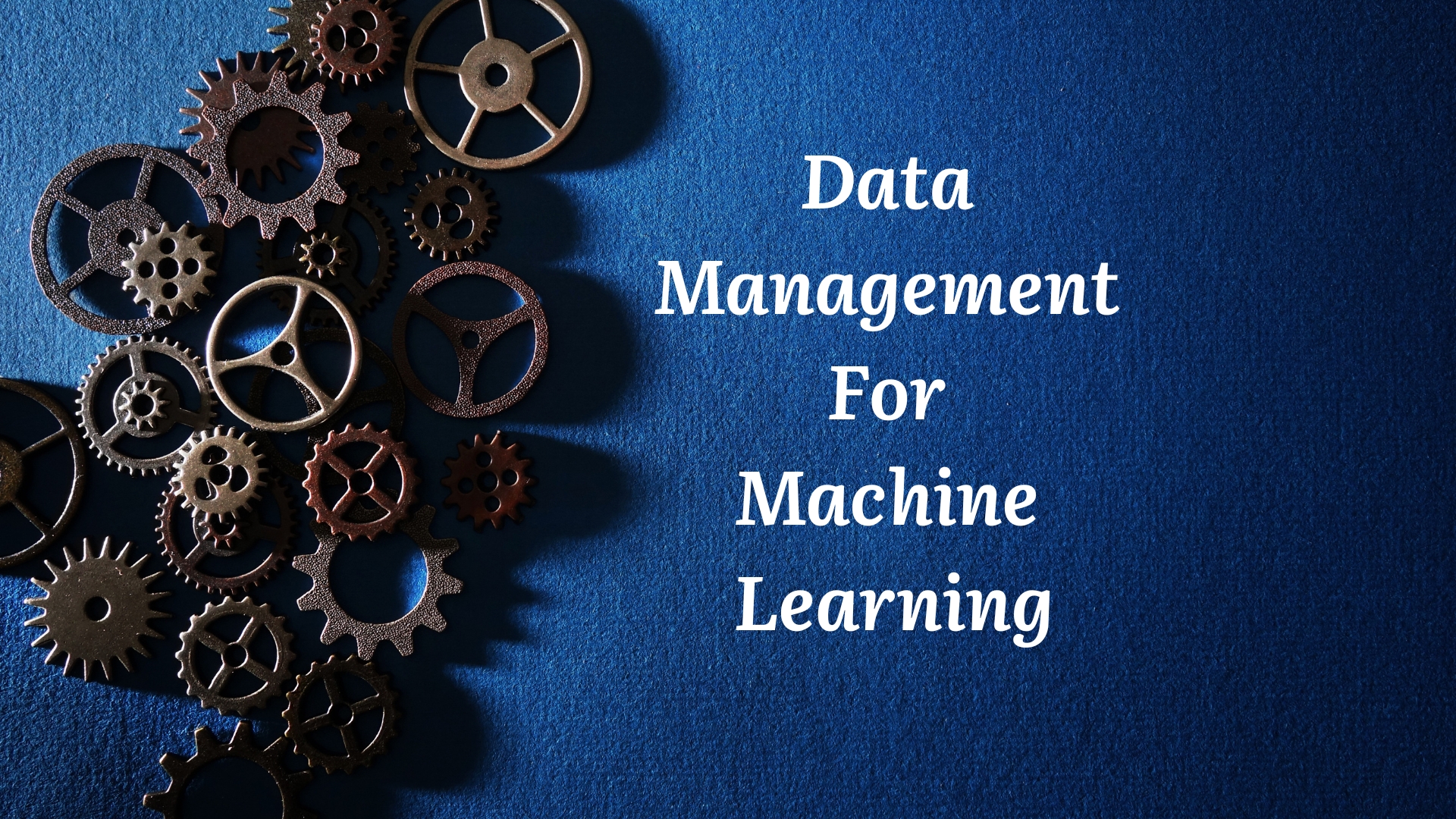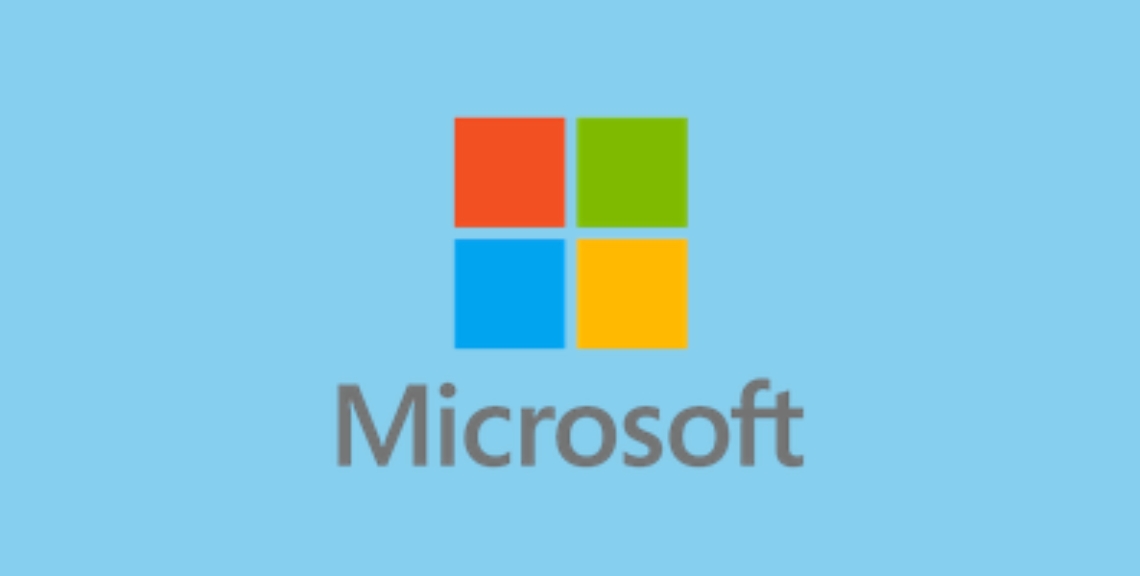Foundation of Success: Managing Data in MLOps Principles
Data Management is the key element behind ML project implementations.
Data serves as the lifeblood of machine learning and how it is handled influences the effectiveness, dependability, and also ultimately the triumph of your models. This becomes more critical in the realm of MLOps principles, where efficient and also sturdy data pipelines are vital for consistent delivery and monitoring.
The chart provided here outlines a range of data management tasks each playing a role:
- Data Collection & Cleansing: It all begins with the basics – ensuring that we collect top-notch data. Cleansing involves detecting and rectifying errors, discrepancies and also missing information. Quality data is crucial for building models.
- Transformation & Validation: Raw data seldom fits seamlessly with machine learning algorithms. Techniques such as scaling and normalization prepare the data for processing. Validation ensures that this transformed data meets the quality standards required for model training.
- Version Control & Metadata Extraction: Data is dynamic by nature and continuously evolving. Version control enables us to monitor changes and backtrack if necessary. Extracting metadata – details about the data itself – proves essential, for grasping its context and also history.
- Data Distribution & Snapshots: Monitoring the distribution of data over time is crucial, for spotting any issues with the data or your model. Taking snapshots allows you to capture the state of the data at moments ensuring reproducibility and also enabling disaster recovery.
- Designing with Timestamps & Backups: By incorporating timestamps into your data sources you can effectively track changes. Identify anomalies. Regularly backing up your data is a safeguard against loss providing a vital safety net for any project.
MLOps Environment for Mastering Data Management Tasks
In MLOps environments, these data management tasks take on heightened importance. Let us dig into why:
- Reproducibility: MLOps stresses the importance of repeatable model deployments. Implementing version control for data and also feature generation code ensures that models can be reconstructed using the dataset resulting in performance.
- Automated Workflows: MLOps thrives on automated processes. Documenting and automating data transformation steps helps reduce error and also streamlines model training.
- Continuous Integration/Continuous Delivery (CI/CD): Integrating data management into CI/CD pipelines ensures data quality checks and also transformations are seamlessly integrated into model updates, leading to faster deployments and more robust models.
- Monitoring and Observability: Proactive monitoring of data quality, drift, and also performance is essential. By catching issues early, you can prevent model degradation and ensure optimal model performance in production.
- Containerization: Containers play a role in isolating models and also their dependencies ensuring they operate consistently across environments. Properly documenting container specifications is essential for environment management.
- Governance and Security: Data governance frameworks are crucial for data security, privacy, and regulatory compliance. They establish clear ownership, access controls, and also usage guidelines, ensuring responsible data utilization.
In a way, Data management isn’t merely a checkbox—it forms the bedrock of machine learning endeavors. By meticulously overseeing your data practices you establish a foundation for constructing high-performing models that seamlessly integrate into MLOps workflows for deployment and also monitoring. Remember, “garbage in garbage out” underscores the importance of quality inputs, in generating models. Ensure you prioritize data organization practices and witness your machine learning initiatives excel to their capacity.
MLOps Foundational Pillars: Data Management Principles
| Data Management Activity | Description |
| Data Collection | The process of gathering data from various sources. |
| Data Cleaning | The process of identifying and correcting (or handling) errors and inconsistencies within the data. |
| Data Transformation | The process of converting data from its raw format into a format that is suitable for machine learning algorithms. This may involve scaling, normalization, feature engineering, and other techniques. |
| Data Validation | The process of ensuring that the data meets the quality standards required for machine learning. This may involve checking for missing values, outliers, and other data quality issues. |
| Data Lineage | Tracking data’s origin and transformations throughout the pipeline is crucial for explainability, debugging, and performance analysis. Utilize data lineage tools to understand how data impacts your models and also identify potential bottlenecks |
| Data Versioning | The process of tracking changes made to data over time. This allows you to revert to previous versions of the data if necessary. |
| Extract metadata | The process of collecting information about the data, such as the data source, creation date, and also data format. |
| Data distribution changes | Monitoring how the distribution of your data changes over time. This can help you identify potential problems with your data or your machine-learning model. |
| Saving snapshots of the data set | Periodically capturing a copy of your data at a specific point in time. This can be helpful for reproducibility and also disaster recovery. |
| Designing data sources with timestamps | Including timestamps in your data sources can help you track changes in the data over time and also identify potential problems. |
| Backing up data | Creating a copy of your data and storing it in a safe location. This is important in case of data loss. |
| Imputing missing values | The process of estimating and filling in missing values in your data. There are several techniques for imputation, such as mean imputation, median imputation, and also k-nearest neighbors imputation. |
| Removing labels | In some cases, it may be necessary to remove labels from your data. For example, if you are training a model to predict customer churn, you may need to remove labels for customers who have not yet churned. |
| Using non-deterministic feature extraction methods | Some feature extraction methods are non-deterministic, meaning that they can produce different results each time they are run. This can make it difficult to reproduce your results. If you must use non-deterministic feature extraction methods, be sure to document them carefully. |
| Taking feature generation code under version control | Version control systems allow you to track changes made to your code over time. This is important for feature generation code, as changes to this code can affect the performance of your machine learning model. |
| Documenting and automating feature transformation | Documenting your feature transformation steps is important for reproducibility. You should also consider automating your feature transformation steps to reduce the risk of errors. |
| Using a container and documenting its specification | Containers can help to ensure that your machine learning model runs consistently across different environments. Be sure to document the specifications of your container, such as the operating system, libraries, and also dependencies. |
| Data Security and Governance | Secure your data with access controls, encryption, and compliance with relevant regulations. Establish data governance frameworks that define ownership, usage guidelines, and also ethical considerations. Remember, responsible data utilization is paramount. |
Key Popular Data Management Tools for MLOps Platform
- Domino Data Lab: A data science platform that provides tools for data management, model training, and model deployment. Domino Data Lab also includes features for collaboration and governance.
- Teradata Vantage: A unified data management platform that offers a variety of features for data warehousing, analytics, and machine learning. Teradata Vantage includes tools for data integration, data quality management, and also data governance.
- Databricks: A unified data platform that offers a variety of features for data lakes, data warehousing, and machine learning. Databricks include tools for data ingestion, data transformation, and also data analytics.
- Snowflake: A cloud-based data warehouse that offers a variety of features for data storage, data analysis, and machine learning. Snowflake includes tools for data ingestion, data transformation, and data sharing.
- BigQuery: A cloud-based data warehouse offered by Google Cloud Platform. BigQuery offers a variety of features for data storage, data analysis, and machine learning. BigQuery includes tools for data ingestion, data transformation, and also data analytics.
- Amazon Redshift: A cloud-based data warehouse offered by Amazon Web Services. Amazon Redshift offers a variety of features for data storage, data analysis, and machine learning. Amazon Redshift includes tools for data ingestion, data transformation, and also data analytics.
More Key Popular Data Management Tools for MLOps Platform:
- Vertica: A massively parallel processing (MPP) database management system that is designed for data warehousing and analytics. Vertica can be used to store and manage large datasets that are used in machine learning models.
- Actian Vector: A high-performance relational database management system that is designed for data warehousing and analytics. Actian Vector can be used to store and manage large datasets that are used in machine learning models.
- Exasol: A high-performance in-memory database management system that is designed for data warehousing and analytics. Exasol can be used to store and manage large datasets that are used in machine learning models.
- MongoDB: A NoSQL document database management system that can be used to store and also manage a variety of data types, including data used in machine learning models.
- Great Expectations: A library for defining and validating data quality expectations.
- Feast: A feature store for managing and also serving ML features.

Data Workflow Management: Essential MLOps Solutions
Managing data workflows is crucial for data pipelines and machine learning projects. Apache Airflow, a popular open-source tool. This table explores alternative solutions, highlighting their key features and also ideal use cases to help you find the best fit for your needs.
| Product | Key Features and Usage |
| Hevo | Data integration platform focused on ease of use and pre-built connectors for various cloud data sources. Ideal for teams migrating to the cloud and seeking a user-friendly solution. |
| Luigi | Open-source workflow management system with a focus on Pythonic code. Well-suited for data pipelines written in Python. |
| Apache NiFi | Open-source data flow processor for automating the movement of data between different systems. Offers a drag-and-drop interface for building data pipelines. |
| AWS Step Functions | Serverless workflow orchestration service for AWS cloud environments. Integrates well with other AWS services. |
| Prefect | Open-source workflow management tool designed to be simple and scalable. Prefect emphasizes modularity and also reusability of code. |
| Dagster | Python framework for building modular and reproducible data science pipelines. Kedro promotes the separation of concerns between data science logic and pipeline orchestration. |
| Kedro | Python framework for building modular and reproducible data science pipelines. Kedro promotes the separation of concerns between data science logic and also pipeline orchestration. |
| Apache Oozie | Open-source workflow management system for Apache Hadoop environments. Primarily used for scheduling Hadoop jobs. |
| Astronomer | Airflow-compatible workflow orchestration platform with a web-based UI for managing and monitoring workflows. |
| Azure Data Factory | Cloud-based ETL and data orchestration service for Microsoft Azure environments. Offers a visual interface for building data pipelines. |
| Airflow | A popular workflow orchestration tool for automating data pipelines |
| Kubeflow | An open-source platform for deploying and managing ML pipelines |
| Feast | A feature store for managing and serving ML features. |
ML Principles: Feature Data Management in ML Pipelines
In the field of MLOps, a feature denotes a data element derived from data and utilized for training machine learning algorithms. Features serve as the components that enable models to identify patterns and generate predictions.
Here’s a breakdown of features in MLOPs:
- Data Transformation: Features are created by transforming raw data into a format that a machine-learning model can understand. This might involve things like encoding categorical variables, scaling numerical features, or creating new features based on combinations of existing data points.
- Feature Store: MLOps often utilizes feature stores to centrally manage features. A feature store acts like a data warehouse specifically for features, ensuring they are documented, curated, and accessible for various models throughout the development and production lifecycle.
- Benefits: Effective feature management through feature stores offers several advantages:
- Reusability: Shared and reusable features across different models save development time and effort.
- Consistency: Consistent feature definitions and transformations ensure models are trained and served with reliable data.
- Efficiency: Feature stores automate tasks like feature computation and logging, streamlining the MLOps workflow.
| Feature Store | Description |
| FEAST | Feature Store |
| Hopsworks | Feature Store & Machine Learning Platform |
| Metastore (Databricks) | Feature Store (part of Databricks Lakehouse Platform) |
| Teradat ARC | Feature Store & Machine Learning Platform |
| Amazon SageMaker | Feature Store (part of AWS SageMaker) |
| Microsoft Azure Machine Learning | Feature Store (part of Azure Machine Learning service) |
| KServe | Model Serving Platform (can be used for feature serving) |
| MLflow Model Registry | Model Registry (can be not be used for feature storage, but can store models that use features) |
In MLOps, it’s essential to have data management practices in place, for success. Effective data management in MLOps offers a range of advantages, such as boosting model performance accelerating deployments ensuring security and compliance, with regulations, and much more.
EY’s MLOps Solution: Streamlining Fraud Detection Systems
EY, a professional services network faced challenges, with their fraud detection systems due to the pace of traditional methods in keeping up with evolving criminal tactics. Delays in processing data and updating models hindered their ability to prevent fraud proactively. To address this issue EY implemented an MLOps platform that focused on data management. This platform included real time data ingestion pipelines, automated feature engineering and continuous model training.
The implementation of the system led to a reduction in fraud rates by identifying suspicious activities proactively. It also enabled faster model deployments allowing EY to quickly adapt to emerging fraud patterns while improving efficiency through automation of data management tasks.
MLOps: Merck Transforms Vaccine Research and Data Governance
Similarly, Merck, a leading company encountered challenges in vaccine research due to processes and inconsistent data quality caused by data silos. To address these issues Merck embraced an MLOps platform that emphasized data governance practices. This involved implementing data access controls tracking data lineage meticulously and ensuring checks on data quality throughout the research pipeline.
As a result of these changes, Merck managed to reduce vaccine development timelines by improving access to and analysis of data. Additionally, the focus on enhancing data quality and consistency resulted in research findings, for the company.
Enhanced collaboration, among research teams was achieved through the establishment of a platform for sharing data.
Enhancing Maintenance: Konux’s MLOps-Driven Data Management
Company: Konux, a provider of IoT and AI solutions
Challenge: Reacting to maintenance needs for industrial equipment often resulted in unexpected downtime and costly repairs.
Solution: Konux introduced an MLOps platform focused on managing sensor data, including real-time data ingestion from equipment sensors, anomaly detection algorithms, and predictive maintenance models.
Results: identification of failures led to reduced unplanned equipment downtime. Maintenance schedules were optimized based on data-driven insights. The overall lifespan of equipment was extended through enhanced maintenance practices.
ML Principles: Key Insights from These Success Stories
These instances underscore the impact of data management in MLOps;
- Quicker time to value: Streamlined data pipelines and automated workflows expedite model training and also deployment.
- Enhanced model performance: Well-managed high-quality data results, in more precise and also resilient models.
- Improved decision-making: Data-backed insights to facilitate better decision-making throughout the organization.
- Increased operational efficiency: Automation and refined data management techniques decrease labor and also resource demands.
When organizations focus on managing data in MLOps they can maximize the power of machine learning and reap substantial business rewards.
Please note that these real-life examples may not delve into software details. They highlight how effective MLOps data management can influence various industries. For detailed case studies consider looking up vendors or industry publications online for a deeper dive, into the subject.
Future Trends: Changing Landscape Data Management in Mlops
The realm of data management, in MLOps is always evolving, with technologies and trends emerging that have the potential to transform how we manage and leverage data. Keeping up with these trends is essential as you navigate through this field to ensure that your data management practices remain efficient, effective, and also ethical. Let’s explore some developments;
1. Serverless Data Processing:
Picture a scenario where a data pipeline automatically adjusts its scale removes the burden of managing infrastructure and only bills you for the resources utilized. Platforms like AWS Lambda and also Google Cloud Functions are leading the way in serverless data processing offering simplified pipelines, cost reduction and enhanced scalability for MLOps teams.
2. Federated Learning:
Imagine training models on distributed data without compromising privacy! Federated learning enables MLOps professionals to train models on devices or servers without sharing the underlying data. This advancement paves the way for collaborative model development while safeguarding data privacy in sectors such, as healthcare or finance.
3. Data Management Platforms (DMPs):
Envision a platform that caters to all your MLOps-related data requirements. From ingestion and cleansing to lineage tracking and also governance.
Data management platforms, like DataHub and Colliery, are combining data management functions into systems simplifying processes and also enhancing data governance.
Advancing MLOps Principles: Shaping Future Data Management
With the emergence of edge computing, data processing, and model inference is now happening closer to where the data originates, such as on devices like smartphones or smart sensors. This shift necessitates lightweight, efficient, and also secure data management approaches tailored to the requirements of edge environments.
As artificial intelligence models grow in complexity understanding how they make decisions becomes crucial for trust and fairness. Explainable AI techniques are advancing rapidly offering insights into model behavior and helping address biases. Responsible AI practices like data anonymization and synthetic data generation are also gaining traction to promote responsible use of data, in machine learning systems.
Embrace the changing landscape of MLOps principles to shape the future of data management. Stay informed explore technologies and uphold agile, efficient and ethical practices to ensure an integration of data and also machine learning success in the years ahead.
Keywords: MLOps Principles | ml Principles | AI
FAQ’s:
1. What is the significance of data management in MLOps?
Data management in MLOps is crucial as it forms the foundation for machine learning endeavors. Efficient data practices ensure the effectiveness, reliability, and success of models, ultimately enabling seamless integration into MLOps workflows for deployment and monitoring.
2. How does MLOps enhance data management practices?
MLOps emphasizes reproducibility, automation, and continuous integration/continuous delivery (CI/CD), ensuring that data management tasks are seamlessly integrated into model updates. This results in faster deployments, more robust models, and proactive monitoring of data quality, drift, and performance.
3. What are some key data management tasks in MLOps?
Key data management tasks in MLOps include data collection, cleansing, transformation, validation, version control, metadata extraction, data distribution monitoring, snapshots, designing with timestamps, and backups, and ensuring data security and governance.
4. How do feature stores contribute to effective data management in MLOps?
Feature stores centralize and manage features used for training machine learning models, promoting reusability, consistency, and efficiency. They automate tasks like feature computation and logging, streamlining the MLOps workflow and ensuring reliable data for model development and production.
5. Can you provide examples of real-life implementations of MLOps-driven data management?
Yes, examples include EY’s implementation focusing on real-time data ingestion, automated feature engineering, and continuous model training for fraud detection systems, Merck’s emphasis on data governance practices for vaccine research, and Konux’s platform for managing sensor data and predictive maintenance in industrial equipment.









